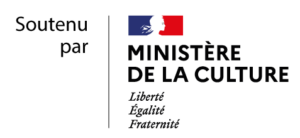Dominic Desroches - PhD, Montreal, Quebec. Author of numerous articles on Peter Sloterdijk and political of time. Member of the new Research Centre in Public Ethics and Governance (Saint-Paul University, Ottawa, Canada).
In an article published in a collective, the German philosopher Peter Sloterdijk examined the conditions that led to democracy[1]. According to him, this political regime must be understood as an atmospheric invention with spatial and mediatic origins. He rests on the capacity to create waiting rooms. Let us understand why.
Indeed, the democratic community rests upon atmospheric premises. From Sloterdijk’s point of view, democracy is in part related to the development of architecture. To illustrate his thesis, he resorts to the Crystal Palace[2] metaphor to recall the first climatic structure. He adds that plants belong also to the ambiance of human structures. Men belong to the “environment”, even ecological homes may date back to the thinkers of the Greek polis, notably Aristotle and the designers of Greek cities. How can this be explained?
The concept of polis (city) necessitates sharing, in an « artificial » world, in other words, built by man, within the same walls. The polis is an ecological home in the psychopolitical sense: to live together according to the Greeks was to experiment a new way of conceiving power and the laws within a limited space. Men are not « citizens » by nature because the climate to become such must be fabricated. They must build a space to allow others within their proximity. Thus, the development of democracy implied a specific urbanization because, to realize its ideal, philosophers needed to reflect on politics in terms of ambiance, in other words, on the “psychopolitical conditions of social integration”[3].
Sloterdijk’s originality underlines that, from a pre-political condition, the idea of a public space is found. This public space is not only a reunion of people, but also the building of a place allowing the meeting of others in proximity, as is the case of the agora. Already, this installation had to favor the participants’ views in order to create a sort of citizen immersion. We had to go out of ourselves to imagine the will of others. One of the atmospheric premises of democracy is this meeting – a space that favors a new and integrative experience – between those who witness and those who participate, between those who speak and those who must, whilst waiting, listen. For the first time, the actor and spectator are found within the same person.
But the structure had to imply a particular acoustic. It had to favor the public discourse, that is to say the transportation of sound in order to facilitate the discussion. With the art of speech, democracy necessitates an ambiance and a rigorous acoustic. It is thus not accidental that democracy and the development of rhetoric and philosophy, that is the knowledge of writing, go hand in hand. In effect, to speak of things and also to grasp concepts, this is what democracy calls for and makes its structure possible. The polis becomes, in this sense, the symbolic reservoir of future democratic debates.
In this atmospheric context, democracy appears only when citizens are finally able to hear the other’s discourse and to concentrate on its content. It requires “waiting rooms”, or in other words structures of temporalisation, in N. Luhmann’s words. It will have already called for participants to learn to use and manage time, concretely in the allotment of speaking and the limitation of elongated discourses of Athenians. They will have understood, as well, the importance of synchronicity, reciprocity, patience and self-control (sophrosyne), which are qualities that require a specific atmosphere. The democratic regime, as we see, calls on itself a training because it has its own « political time », which is longer and more demanding than a monarchy and a tyranny. And if Greek psychology rests on pride, courage or force on the thymós, democracy must re-assure itself that pride wasn’t going to transpose itself immediately to actions and reactions. This regime demanded citizens a certain self-control that is impossible without a new relationship to time and ambiance. This is what gave way to a new extension of thymós.
This statement translates perhaps the revolutionary character of all democratic ideas. In democracy, indeed, the target of equality can only be realized if the atmospheric conditions allow it. Against a tyranny where the thymós has gone mad, a tyranny that does not respect its adversaries, the length of speech or the reflection, democracy demands a reflective relationship in time. Democracy is an atmospheric political art, concluded Sloterdijk, because where there is no compensatory space, fear and constraint will tend to impose their laws against liberty.
[1] Sloterdijk, P., « Atmospheric Politics », in Making Things Public – Atmospheres of Democracy (B. Latour and P. Weibel, Ed.). Cambridge, MIT Press, 2005, p. 944-951.
[2] The Crystal Palace is first of all a structure. It is a building which was built to accomodate London’s Great Exhibition of 1851 in Hyde Park. The structure integrated iron and glass. It was an immense greenhouse which, built in record time due to the use of prefabricated structures, allowed the a view of the sky. As a metaphor, the Crystal Palace is, for Slotedijk, the image of the European capitalist economy which led to globalization. It is finally the title of a section of Globen, book II of his trilogy.
[3] Sloterdijk, P. « Atmospheric Politics », p. 947.



